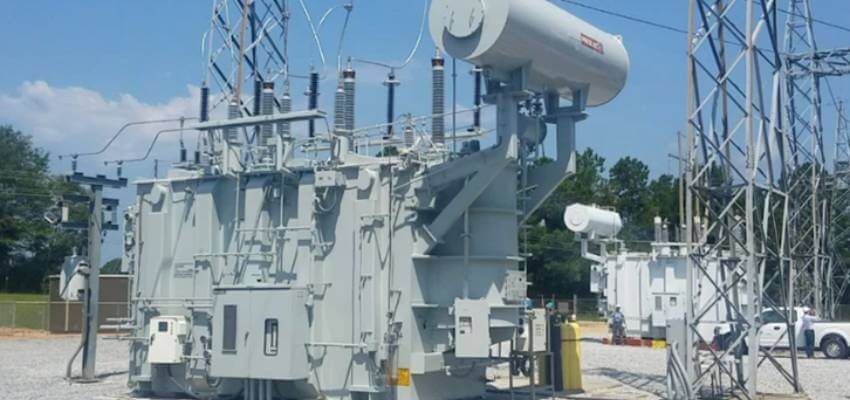GEGR conducts commissioning test of first-of-its-kind transformer
USA: GE Global Research (GEGR) and Cooperative Energy completed commissioning tests for a first-of-its-kind full-scale prototype large power transformer (LPT).

Image source: National Energy Technology Laboratory
USA: GE Global Research (GEGR) and Cooperative Energy completed commissioning tests for a first-of-its-kind full-scale prototype large power transformer (LPT).
The technology can lead to greater grid resilience during power outages. This work is being performed under a cooperative agreement awarded by the U.S. Department of Energy Office of Electricity’s Transformer Resilience and Advanced Components program (TRAC), which is managed by National Energy Technology Laboratory (NETL), a national laboratory of the U.S. Department of Energy.
Now fully operational as part of the power distribution system in Columbia, Mississippi, the LPT represents the world’s first variable impedance flexible design transformer in its class, rated at 60 MVA. This transformer’s variable impedance design advances a more flexible and adaptable LPT promoting greater standardization to increase grid resilience, such as faster recovery through greater interchangeability of components.
“Adopting more flexible LPTs on a large scale would mean less cost in the procurement, design and installation than traditional transformer designs which historically have been a custom design installation,” said Keith Dodrill, a project officer with NETL’s Energy Delivery and Security Team. “This would provide downward pressure on the rate a customer would pay for electricity. Additionally, more operational flexibility enables a utility to scale as distribution load evolves over time, relieving the operational costs for the utility.”
LPTs are a critical component of the electric delivery system with more than 90 % of consumed electricity passing through them at some point. These components are used to “step-up” the voltage at generation facilities for efficient, long-haul transmission of electricity and to “step-down” the voltage at distribution substations to levels more readily used by customers.
With increases in extreme weather events, such as hurricanes, tornadoes, coastal flooding, lighting storms, the unpredictability of natural hazards like earthquakes, geomagnetic disturbances and the persistent threat of deliberate attacks such as cyberattacks, damage to these critical components is a growing concern of the electricity industry. One of the primary mission areas of the TRAC program is to catalyse research for components to modernize the delivery of the US power grid.
NETL has been involved in the project from the initial design concepts from a project management perspective under a funding opportunity announcement (FOA). Current prototype testing is part of Phase 2 of the development that sought to demonstrate at least a 100 MVA prototype transformer.
Source: National Energy Technology Laboratory
#Cooperative Energy#GE Global Research#large power transformer#NETL#testing#USA




